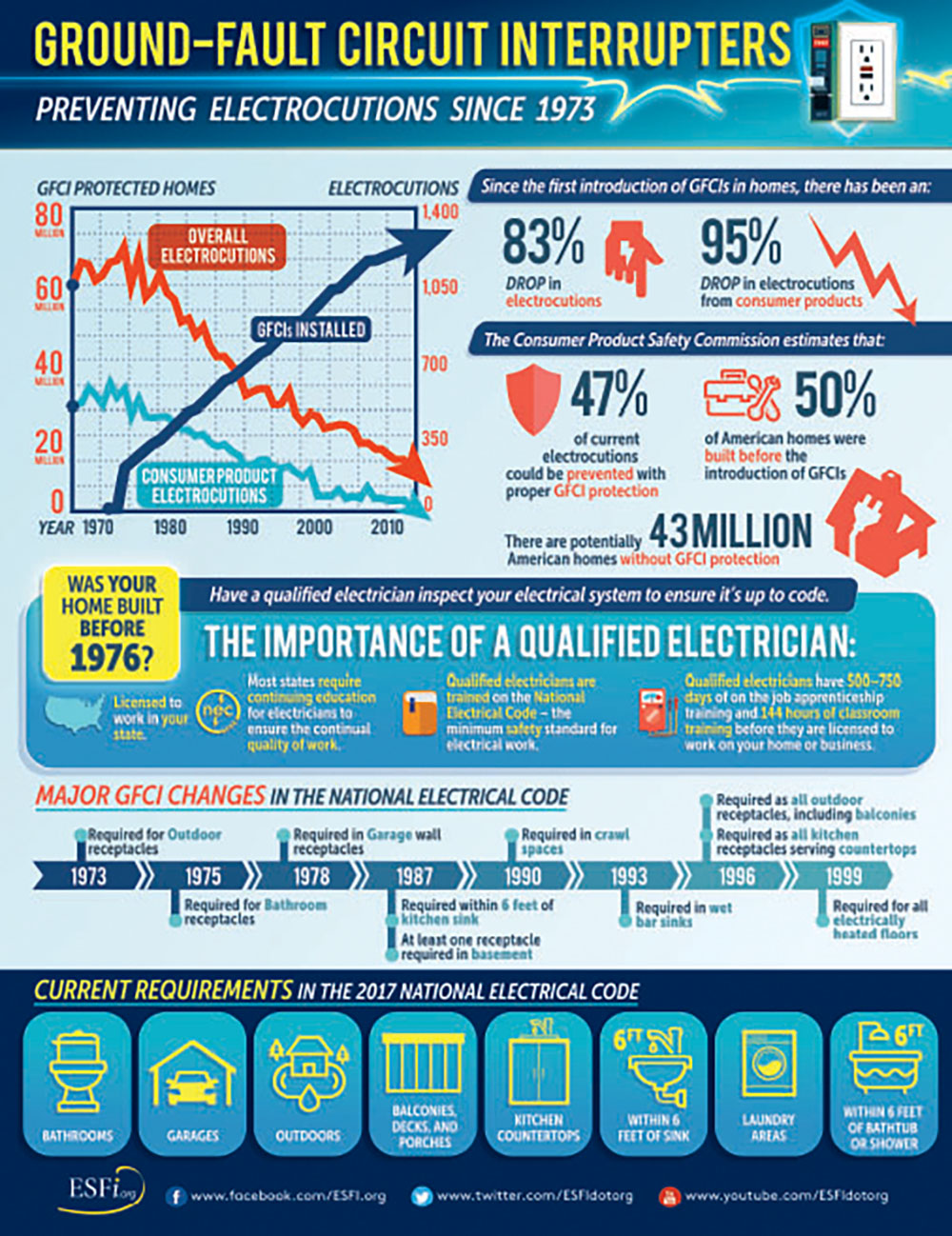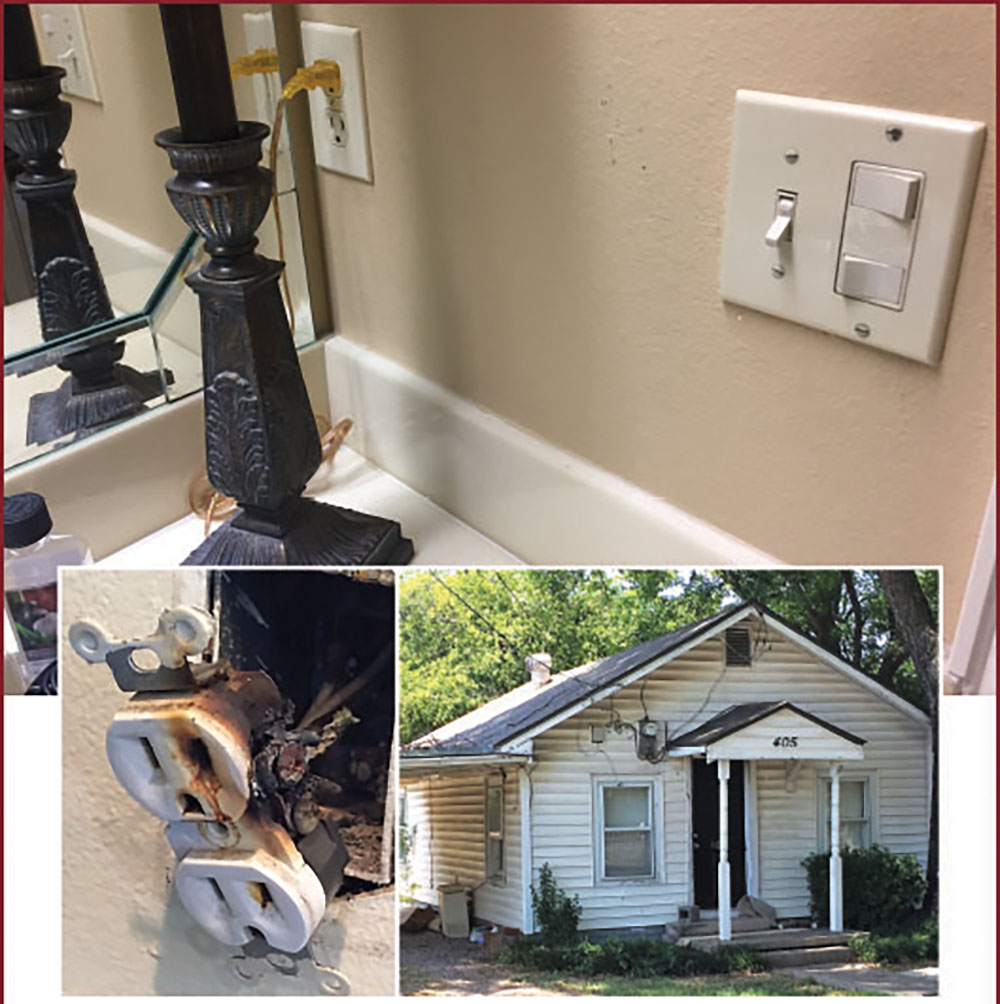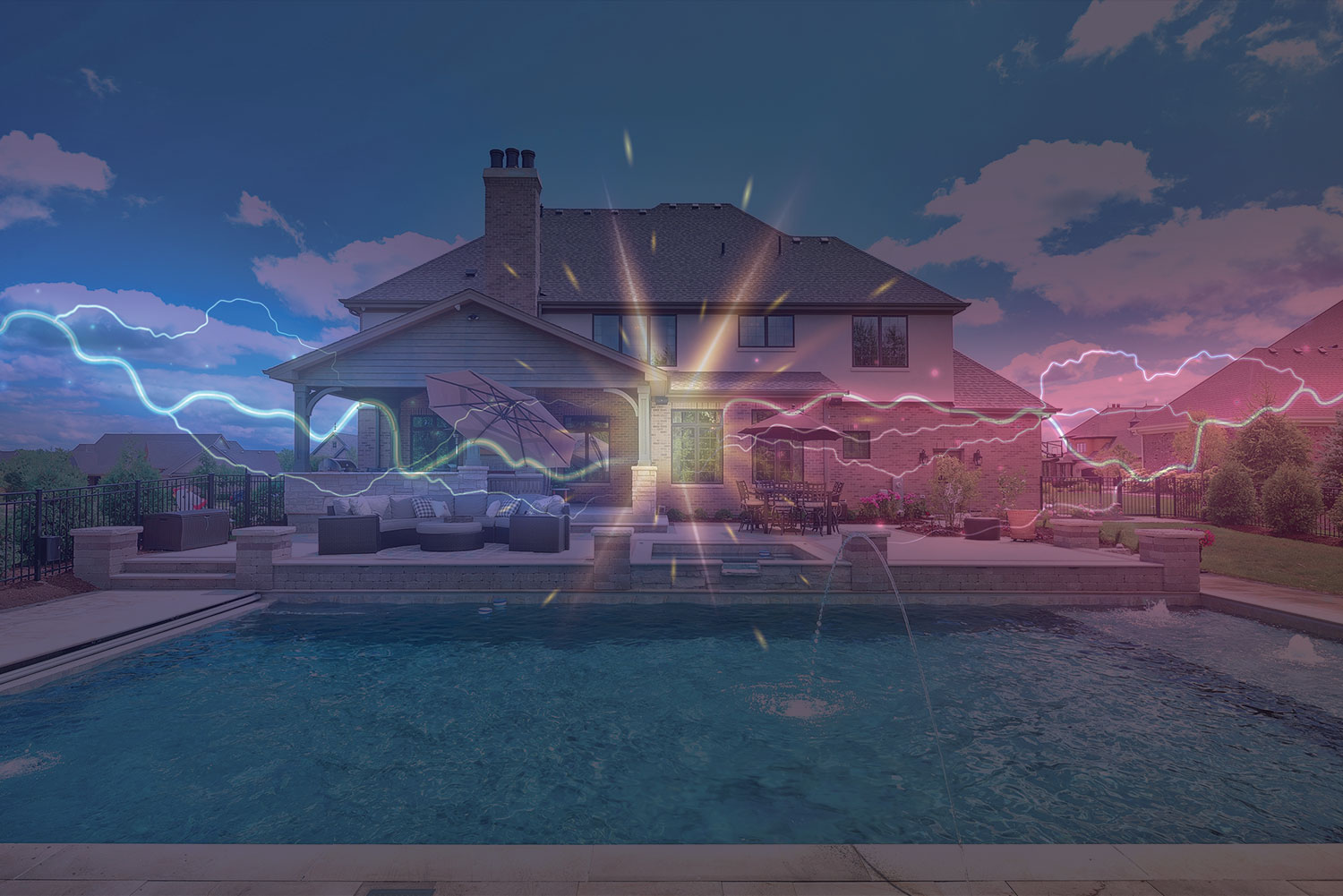Things can change in the blink of an eye. Ask your son or daughter how to use a rotary telephone and see the blank stares you receive. Things we inspectors and electricians take for granted, such as ground-fault circuit-interrupter (GFCI) protection, are somewhat foreign to the average homeowner. On top of that, changes occur every time the National Electric Code (NEC) is revised or adopted by the state or local municipality.
This article attempts to bridge a gap and bring understanding about these misunderstood devices. Do homeowners understand the purpose of a GFCI device? Do they understand where these devices are required by the NEC? Do they know the NEC exists, not to mention which edition is currently enforced within their state or municipality?
Many homeowners may be comfortable making an occasional repair to their electrical system. Some homeowners will change out a non-working switch or receptacle and consider it a money-saving option over hiring a licensed electrical contractor. I must also state that most homeowners desire to do good work because a bad electrical installation could harm them or their family.
Most laws allow a homeowner to conduct electrical work associated with the home they reside in. There is usually a limit to what can be done without a permit or an inspection. Before beginning any electrical project, he homeowner should contact their local electrical inspection department to find out the specific rules to making electrical system home repairs.
Let’s take an example of a homeowner who discovers that a receptacle in the bathroom no longer functions. The home was constructed in 1965 and has been in the family for many years. The family has taken great pride in making the necessary repairs to keep the home functioning and in appealing condition. The homeowner turns off the circuit breaker to the receptacle in the bathroom and, by chance, has a voltmeter that assures the absence of electricity. With the receptacle removed and in hand, it is off to the hardware store to find another receptacle. The homeowner finds the identical receptacle, makes the purchase, and returns home. The receptacle is installed, and the circuit breaker is turned back on. The lamp on the counter is plugged back in and everything is back to normal.
The homeowner may be under the impression that the repair that has been completed is safe and Code-compliant. But is that true? The homeowner knows that the receptacle is working properly but may be unaware that the receptacle needed to be a GFCI device or GFCI protected to be compliant with today’s Code.

The following week, a hairdryer falls into a sink of water, and his daughter receives an electrical shock. Had the homeowner been aware of the need for GFCI protection, he would have gladly purchased a GFCI receptacle. The homeowner loves his daughter and does not want to see her hurt. He remarks that he put back the same receptacle and assumed this was safe.
Upset, the homeowner drives back to the hardware store. He complains to the employee and store manager. The homeowner is told that due to liability concerns, store policy will not allow employees of the store to inform the customer on how to do electrical work or of the need for such devices.
What is GFCI protection?
The primary function of a GFCI device is to protect people from electric shock hazards. The GFCI sensing system within the device is continuously monitoring the current balance in the ungrounded (hot) conductor and the grounded (neutral) conductor. If the current in the grounded (neutral) conductor becomes less than the current in the ungrounded conductor, the device trips, indicating that there is a ground fault in the system.
A portion of the current returns to the supply source by some path other than the grounded conductor. This could be by means of the equipment-grounding conductor associated with the branch circuit. With a current imbalance as low as 4-6 mA, the GFCI will interrupt the circuit. This will be seen by the homeowner as a trip or off indicator on the device. (See Figure 1.)

A GFCI is a safety device that de-energizes a portion or whole circuit within an established period of time when a current-to-ground exceeds the values established for a Class A device. A Class A ground-fault circuit interrupter will generally trip when the current-to-ground is 6 mA or higher, and typically does not trip when the current-to-ground is less than 4 mA.
GFCI protection in the home
Homeowners are likely to encounter these devices in several locations. This will be based on the edition of the NEC under which a home’s electrical system was constructed. Most homes will have GFCI protection in bathrooms, kitchens, garages, crawl spaces, unfinished basements, and in outdoor locations for receptacle outlets. These devices have prominent markings on the face that they should be tested monthly. Homeowners need not beat themselves up for a lack of testing these devices. Most seasoned electricians and inspectors do not have a monthly plan to test these devices in their own homes. (See photo 2.)
Protection for these locations may be at the receptacle device itself, which would be a GFCI device located within the branch circuit or GFCI overcurrent device protection located within the electrical panel. It is not uncommon to find an GFCI receptacle located within the garage and providing downstream protection to outside receptacles. The same is also true in kitchens where a GFCI receptacle provides downstream protection to other receptacles in that kitchen branch circuit. You may also find this in bathroom locations where a GFCI-protected receptacle is installed in one bathroom and provides GFCI protection for receptacles on that same branch circuit located in other bathrooms.
In many instances, GFCI protection can be found within the electrical panel. Many times, this panel is located in the garage but can also be located in other areas of the home. By opening the panel cover door, the homeowner can look at the breakers to see if one is tripped. Resetting the breaker should return electricity to the branch circuit, unless there is still a fault in the system. If a homeowner is unsure how to work on their electrical system, it is recommended that they contact a licensed electrical contractor to evaluate the electrical problem.
As a homeowner, this information may allow for troubleshooting and resetting the tripped device in lieu of paying an electrical contractor to evaluate and fix the problem. Many electrical contractors have arrived on the scene only to reset the GFCI device. They are happy for the work, but it can be expensive to the homeowner to pay an invoice of $85 just to reset the GFCI device.
Bringing light to a safety issue
This information was intended to illuminate this safety issue and educate about these devices and how to operate them. We have not broached the topic of tamper-resistant receptacles, weather-resistant receptacles, arc-fault circuit-interrupter (AFCI) protection, and other NEC requirements that never make it down to the homeowner level. These may be topics of future articles.
As an organization that prides itself on providing information to inspectors and electricians about electrical safety, the homeowner should not be forgotten. Most electrical professionals are homeowners or live in dwelling units. Inspectors, electricians, and International Association of Electrical Inspectors members, happen to be plugged into a pipeline of valuable knowledge about these updates and changes to the Code.

It’s important to start sharing this knowledge at the local level to ensure that IAEI continues to keep families electrically safe. Sons and daughters living in family homes today will one day move into a new home and need this information. The legacy of maintaining their safety will live on for a lifetime.
More information regarding home electrical safety can be found by contacting your local inspection jurisdiction. Many will be more than happy to assist with concerns about the problem and information on current Code requirements. They can also provide information as to whether an electrical permit or inspection will be required.
Both IAEI and the Electrical Safety Foundation International (ESFI) provide information about electrical safety. Check the websites of these organizations for information you might find helpful. (See figure 2.)
Joseph Wages, Jr., is the Technical Advisor, Education, Codes and Standards for IAEI. He served as IAEI’s Education, Codes and Standards Coordinator. He represents IAEI on NFPA’s NEC Code Making Panel 2 for the 2020 NEC Code cycle. He previously represented IAEI on NFPA’s NEC Code Making Panel 3 for the 2014 and 2017 NEC Code cycle. He also serves on the Underwriters Laboratory Electrical Council and on several UL Technical Standard Panels. He is an ICC Certified Building Official and holds certifications as building plans examiner, building inspector, chief building code analyst and one- and two-family dwelling inspector. He is also an IAEI Certified Electrical Inspector for one- and two-family dwellings.
Joseph may be contacted on Twitter @jwages23 or on LinkedIn: www.linkedin.com/pub/joseph-wages-jr/23/4b5/937















Find Us on Socials